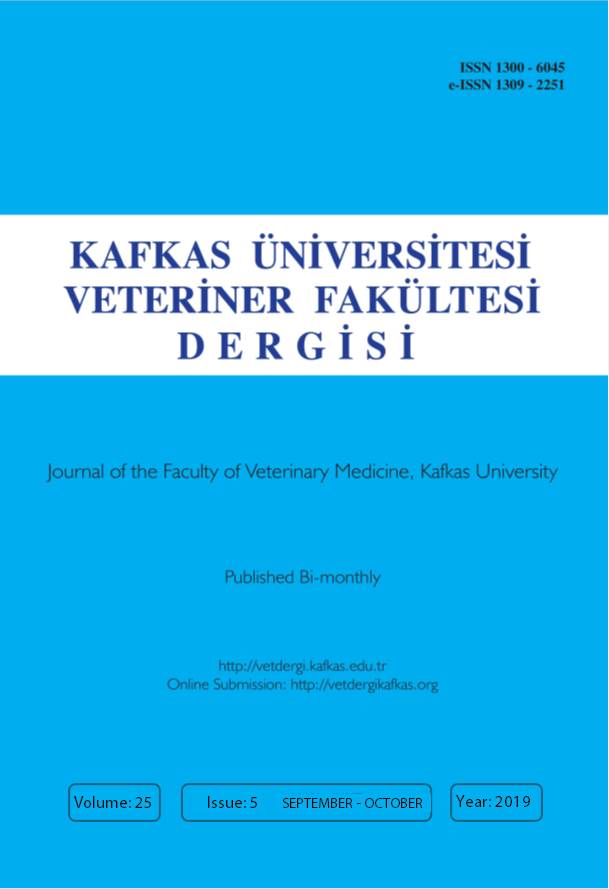
This journal is licensed under a Creative Commons Attribution-NonCommercial 4.0 International License
Kafkas Üniversitesi Veteriner Fakültesi Dergisi
2019 , Vol 25 , Issue 5
Effects of Presence or Absence of a Dominant Follicle Estimated by a Single Ultrasound Examination at the Time of Follicular Aspiration on Superovulatory Responses and Embryo Production in Lactating Simmental Cows
1Dicle University, Faculty of Veterinary Medicine, Department of Reproduction and Artificial Insemination, TR-21280 Diyarbakir - TURKEY2Dicle University, Faculty of Veterinary Medicine, Department of Obstetrics and Gynecology, TR-21280 Diyarbakir - TURKEY
3TIGEM Ceylanpinar Directorate of Agricultural Enterprise, Ceylanpinar, TR-63570 Sanliurfa - TURKEY DOI : 10.9775/kvfd.2018.21472 The aim of the study was to evaluate effects of presence or absence of a dominant follicle (DF) estimated by a single ultrasound examination at the time of follicular aspiration (FA) on superstimulatory and superovulatory responses and embryo production in lactating Simmental cows. At random stages of the estrous cycle, the ovaries of cows (n=42) were examined by transrectal ultrasonography (US) and all follicles ≥3 mm were counted. Donors with <10 follicles 3-8 mm in diameter were considered to have a dominant follicle (group DF+; n=30), while donors ≥10 small follicles 3-8 mm were classified as having no dominant follicle (group DF–; n=12). Just after US examination, all cows were subjected to ultrasoundguided transvaginal aspiration of all follicles ≥5 mm and a progesterone-releasing device was placed in the vagina. Thirty-six h after FA, all cows were superstimulated with FSH, which was given as twice-daily injections over 6 days. Cows were pre-treated with a single dose of 400 IU of eCG 24 h before the start of FSH treatments. It was concluded from this study that the presence of a DF estimated by a single ultrasound examination at the time of FA effects negatively the superstimulatory and superovulatory responses, fertilization rate and embryo quality (P<0.05) but not the number of embryos collected. It was also concluded that estimation of a dominant follicle by a single ultrasound examination at the time of follicular aspiration based on the number of small follicles may be used the selection of potential donor cows and can significantly contribute to improvements in superstimulatory and superovulatory responses and embryo quality. Keywords : Superovulation, Cattle, Follicle aspiration, eCG, FSH










